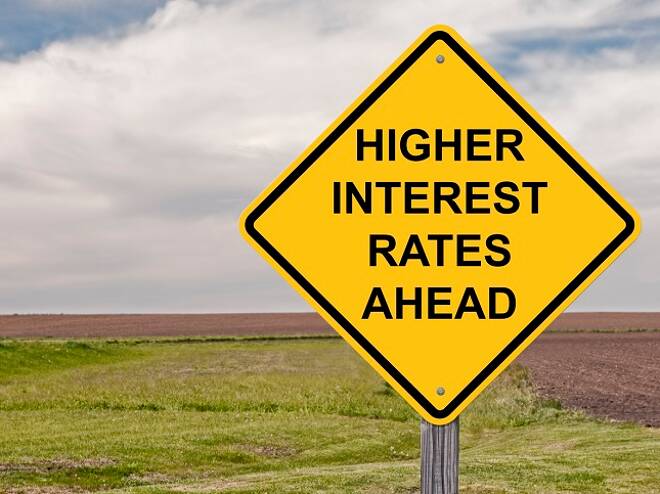Equity investors didn’t like what they heard from Fed Chair Jerome Powell on Wednesday. After trading more than 350 points higher intraday, the Dow Jones Industrial Average took a dive after the Federal Reserve raised interest rates and continued to decline throughout Powell’s press conference, in one of the worst market reactions to an interest rate hike in more than two decades. Tech and Consumer Discretionary sectors were hit the most driving the S&P 500 1.54% lower for the day, and the heavy weighted Tech index, the NASDAQ Composite, ended the day 2.17% lower.
Advertisement
Advertisement
How did Powell Upset the Markets?
By:
Despite many signs of global economic growth slowing, the Fed does not seem to be very concerned at this stage suggesting that monetary policy will continue to tighten albeit at a slower pace than previously projected
The decision to raise interest rates by 25 basis points was widely anticipated and priced in most asset classes, so it is not the rate hike itself that upset investors. Investors were expecting a more dovish tone from Powell given the sharp fall in equity markets and challenging global macroeconomic conditions. All they got was a less hawkish tone.
Despite many signs of global economic growth slowing, the Fed does not seem to be very concerned at this stage suggesting that monetary policy will continue to tighten albeit at a slower pace than previously projected. What appeared to be even more concerning to equity investors is that Powell is not only ignoring Trump’s calls to pause the tightening cycle, but he is also not listening to them. In answering a journalist’s questions related to market volatility, Powell said that “we don’t look at any one market. We look at a really big range of financial conditions and what matters for the broader economy is material changes in a broad range of financial conditions that are sustained for a period of time”.
Powell’s answer may simply be interpreted as not to expect a ‘Powell Put’ to save equity markets from further declines. That is likely to continue hurting market confidence which over the past decade relied so heavily on monetary policymakers to intervene when asset prices plunge.
Another concern for financial markets is the unwinding of the Fed’s balance sheet. Powell mentioned that balance sheet reduction would remain on autopilot, suggesting that the Fed is inflexible in this regard. That’s likely to lead to continued tightening of financial conditions, which could lead to further downside risk.
Markets are just not convinced that growth is as strong as projected by the FOMC, otherwise we wouldn’t have seen the 10–2 Year Treasury spread shrinking below ten basis points today. With such conditions, expect risk to remain skewed to the downside for the few remaining days of 2018.
Disclaimer: The content in this article comprises personal opinions and should not be construed as containing personal and/or other investment advice and/or an offer of and/or solicitation for any transactions in financial instruments and/or a guarantee and/or prediction of future performance. ForexTime (FXTM), its affiliates, agents, directors, officers or employees do not guarantee the accuracy, validity, timeliness or completeness, of any information or data made available and assume no liability as to any loss arising from any investment based on the same.
About the Author
FXTMcontributor
Advertisement
